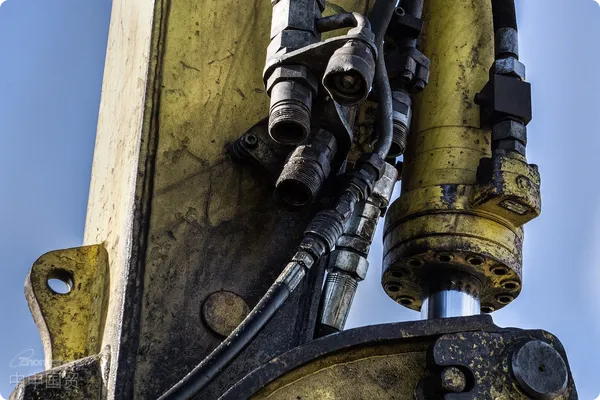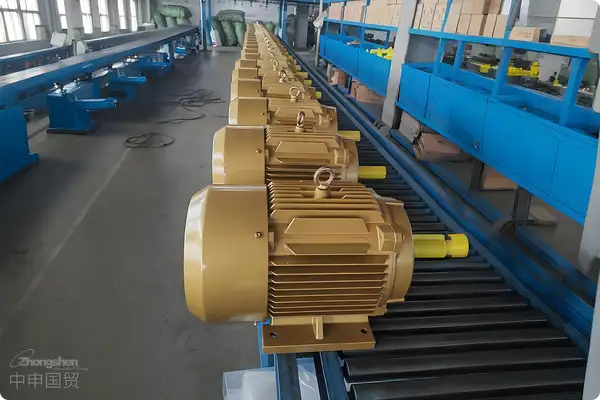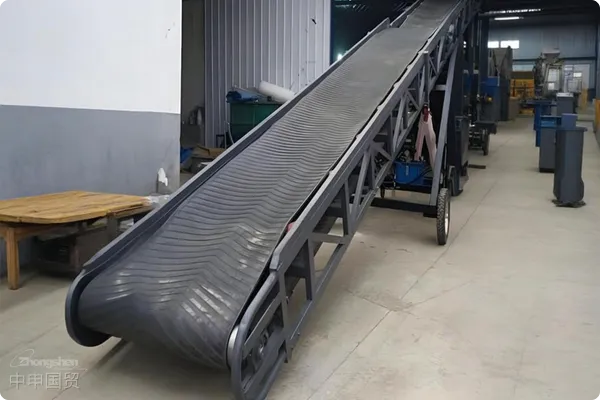- Shanghai Zhongshen International Trade Co., Ltd. - Two decades of trade agency expertise.
- Service Hotline: 139 1787 2118

Improve the classified management of manufacturing enterprises: With the deepening development of global economic integration, machinery and equipment agencyimport and exportbusiness has increasingly become an important way for enterprises to expand into overseas markets. This article will explore in depth the basic processes of machinery and equipment import and export agency,Export Representationthe role of agents, and key considerations enterprises need to pay attention to during this process. Through analysis of target market regulations, product compliance, customs procedures, logistics, compliance, and risk control, the article aims to provide actionable guidance to help enterprises succeed in international trade. By effectively utilizing agency services, enterprises can reduce operational costs, improve efficiency, and mitigate risks.
Analysis of Machinery and Equipment Import and Export Agency Processes: From Preparation to Delivery
Target Market and Compliance: The Foundation of Export
MachineryEquipment ExportThe first step is to thoroughly understand the specific regulations of the target market, which include not only import tariffs and policies but also technical standards. For example, some countries have strict requirements on the materials, production processes, environmental performance, and safety standards of machinery and equipment. Before exporting, enterprises need to clarify product positioning to ensure it meets local market demands and obtain international certifications such as CE and ISO when necessary. Additionally, exporting enterprises must have legitimate import and export operation rights and complete relevant registrations and tax filings to fully prepare for subsequent customs declaration and tax refund processes.
Customs Procedures: Ensuring Smooth Export of Goods
Machinery & EquipmentExport Clearanceis a crucial step, with its core lying in the preparation of complete and accurate customs declaration documents. These documents typically include commercial invoices, packing lists, contracts,It is recommended to verify through the following methods:certificates, and product quality inspection certificates. Enterprises need to submit all necessary documents through the customs electronic declaration system and cooperate with customs inspections to ensure consistency between goods information and declared content. After passing inspection, enterprises must pay corresponding tariffs based on the products HS code and completeExport Drawbackprocedures. Therefore, accurate product classification and HS code identification are critical, directly affecting tariff and tax refund calculations.
Logistics and Transportation: Choosing the Right Shipping Method
The transportation method for machinery and equipment should be selected based on its characteristics.Maritime Transportationis suitable for bulk cargo,Air Transportationis more appropriate for time-sensitive orders. In terms of packaging, machinery and equipment require professional anti-shock, moisture-proof, and rust-proof treatments to ensure safety during long-distance transportation. Many enterprises opt for professional export agency companies that provide one-stop logistics services from factory to port, including transportation, insurance, and warehousing, thereby reducing transportation risks. The customs clearance process also requires exporters to actively cooperate with destination country clearance agents, providing all required documents and delivering goods to clients on time to ensure timely completion of delivery.
The Role of Export Agents: Helping Enterprises Expand Efficiently
Documentation and Compliance: Lowering Export Barriers
Export agents play an indispensable role in the import and export agency process for machinery and equipment. They can assist enterprises in preparing the full set of documents required for export, such as commercial invoices, packing lists, and certificates of origin. Additionally, agents can help companies obtain international certifications like CE and ISO, ensuring products meet the entry requirements of target markets, thereby lowering export barriers and saving enterprises time and effort.
Customs Clearance and Logistics: Optimizing Supply Chain Efficiency
Professional export agency companies are familiar with customs procedures and can complete customs clearance efficiently. They also provide comprehensive logistics solutions, including transportation, insurance, and warehousing services, thereby optimizing supply chain management and reducing operational costs. Through the professional services of agents, enterprises can focus more on product development and market expansion.
Market and Regulations: Providing Decision Support
Export agents not only offer operational support but also provide market consulting and regulatory interpretation services. They stay updated on regulatory changes in target markets, helping enterprises avoid export risks caused by policy shifts. Furthermore, they can offer analyses of market competition and demand trends, assisting enterprises in formulating more effective export strategies.
Finance and Tax Refunds: Ensuring Trade Benefits
Export agency companies can also assist enterprises with export tax refund applications, ensuring tax compliance and maximizing refund benefits. Additionally, they provide professional foreign exchange settlement services, helping enterprises mitigate risks from exchange rate fluctuations. These financial support services enable enterprises to achieve greater economic benefits in international trade.
Key Considerations for Machinery and Equipment Export: Mitigating Risks and Ensuring Smooth Operations
Product Classification and HS Codes: Key to Tariffs and Tax Refunds
The classification of machinery parts directly affects tariff and tax refund calculations. Enterprises must accurately identify the HS codes for their products and ensure declared information matches the actual goods. Incorrect HS codes may lead to tariff calculation errors or even affect tax refunds. Therefore, understanding and mastering HS code classification principles is crucial.
Packaging and Transportation Safety: Ensuring Cargo Security
Appropriate packaging solutions should be designed based on the material, size, and transportation method of machinery parts to avoid damage during transit. For precision machinery equipment, anti-vibration, moisture-proof, and anti-rust measures are particularly important. Purchasing transportation insurance is an effective way to mitigate uncontrollable risks, ensuring compensation in case of accidents.
Contract Terms and Liability Allocation: Reducing Trade Disputes
Export contracts should clearly define the responsibilities and obligations of both parties, especially delivery terms (e.g., FOB, CIF), and include detailed compensation clauses for scenarios like cargo damage or delayed delivery. Clear liability allocation helps avoid unnecessary disputes and ensures smooth transactions.
Compliance and Environmental Requirements: Meeting International Standards
Some countries impose strict environmental performance requirements on machinery and equipment, such as RoHS directives or REACH regulations. Enterprises must ensure their products comply with the environmental standards of the importing country and prepare relevant compliance documentation to enter target markets smoothly.
SummaryMachinery and equipment import and export agency is a complex and precise business that requires thorough preparation at every stage. By partnering with professional agency companies, enterprises can reduce operational costs, improve efficiency, and better mitigate risks. At the same time, enterprises must prioritize compliance, product quality, packaging, and transportation to remain competitive in the global market. As international trade continues to evolve, mastering and optimizing machinery and equipment import and export strategies will become key to expanding overseas markets.
Related Recommendations
Category case
Contact Us
Email: service@sh-zhongshen.com
Related Recommendations
Contact via WeChat

? 2025. All Rights Reserved. Shanghai ICP No. 2023007705-2  PSB Record: Shanghai No.31011502009912
PSB Record: Shanghai No.31011502009912









